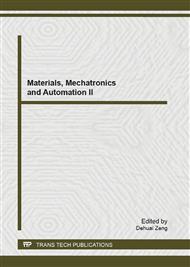p.188
p.193
p.198
p.203
p.211
p.217
p.223
p.226
p.232
Solution of Material Mechanics by RPIM Meshless Method
Abstract:
With the compact support of radial point interpolation shape functions (RPIM), the stiffness matrix of system equation can be sparse, so its very suitable for meshless methods.This interpolation method have the Kronecker delta function property, so the essential boundary conditions can be enforced directly and accurately without any additional treatment. In this paper, the radial point interpolation shape function is used, calculate the shape function in different node distribution cases, analyse the compact support and Kronecker delta function,use penalty method to apply the essential boundary conditions. In this paper, the RPIM is applied to solving the deformation in one and two dimensional solids by different loads, the results demonstrated that the meshfree RPIM can effectively solve material mechanics problems.
Info:
Periodical:
Pages:
211-216
Citation:
Online since:
August 2013
Authors:
Price:
Сopyright:
© 2013 Trans Tech Publications Ltd. All Rights Reserved
Share:
Citation:


